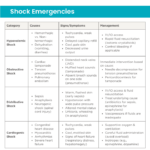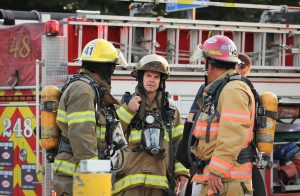
Share this Image On Your Site
CPR Saves Lives
Cardiopulmonary resuscitation (CPR) involves the use of chest compressions and rescue breathing (mouth-to-mouth resuscitation). It may prove to be the difference between life and death for cardiac arrest victims.
What Is Cardiac Arrest?
Cardiac arrest occurs when the heart suddenly stops beating. In this scenario, blood stops circulating throughout the body and breathing will stop.
What Are the Causes of Cardiac Arrest?
- An abnormal heart rhythm
- Drugs and/or poisoning
- Heart disease or a heart attack
- Blood loss or a traumatic injury
- Anaphylaxis
Key Stats About Cardiac Arrest
The American Heart Association (AHA) offers the following stats about cardiac arrest:
- Cardiac arrest is the leading cause of death in the United States.
- More than 350,000 out-of-hospital cardiac arrest incidents occur in the United States each year.
- Nearly 90 percent of out-of-hospital cardiac arrest victims die.
- 70 percent of out-of-hospital cardiac arrest incidents take place in homes. This means a cardiac arrest victim is likely to be a loved one.
- 46 percent of out-of-hospital cardiac arrest victims receive immediate help before advanced medical personnel arrive on scene.
How Can CPR Help Cardiac Arrest Victims?
Cells die without oxygen. However, CPR keeps oxygenated blood moving around the body and helps vital organs stay alive.
Key Stats About CPR
The AHA provides the following stats about CPR:
- CPR that is performed in the first few minutes of cardiac arrest may double or triple a victim’s chances of survival.
- 70 percent of Americans may feel helpless to respond in a cardiac emergency because they do not know how to perform CPR or their CPR training has significantly lapsed.
- Approximately 46 percent of out-of-hospital cardiac arrest victims receive bystander CPR.
- More than 12 million Americans receive AHA CPR training annually.
What Is CPR?
- Recommended for use on any individual who is unresponsive and not breathing normally.
- Involves the combination of compressing the chest and giving mouth-to-mouth breaths.
- Requires additional effort in contrast to hands-only CPR.
How to Perform CPR
- Call 911 or send someone to call 911 for you.
- Administer 30 chest compressions.
- Give two breaths.
- Repeat 30 chest compressions and two breaths.
What Is Hands-Only CPR?
- Recommended for use on adults who suddenly collapse when the rescuer does not feel comfortable providing mouth-to-mouth breaths or is not trained in providing rescue breaths
- The rescuer does non-stop chest compressions at a rate of 100 to 120 compressions per minute. No breaths are given.
- May still help a cardiac arrest victim maintain sufficient oxygen to the vital organs until advanced medical personnel arrive.
How to Perform Hands-Only CPR
- Call 911 or send someone to call 911 for you.
- Administer chest compressions.
Why Should You Receive CPR Training?
- Failure to assist cardiac arrest victims may result in unnecessary deaths.
- CPR training empowers business professionals, students and everyday citizens to become lifesavers in their communities.
- CPR training programs are available nationwide to teach individuals how to administer CPR effectively.
Please contact SureFire CPR to learn about CPR training in Southern California.










